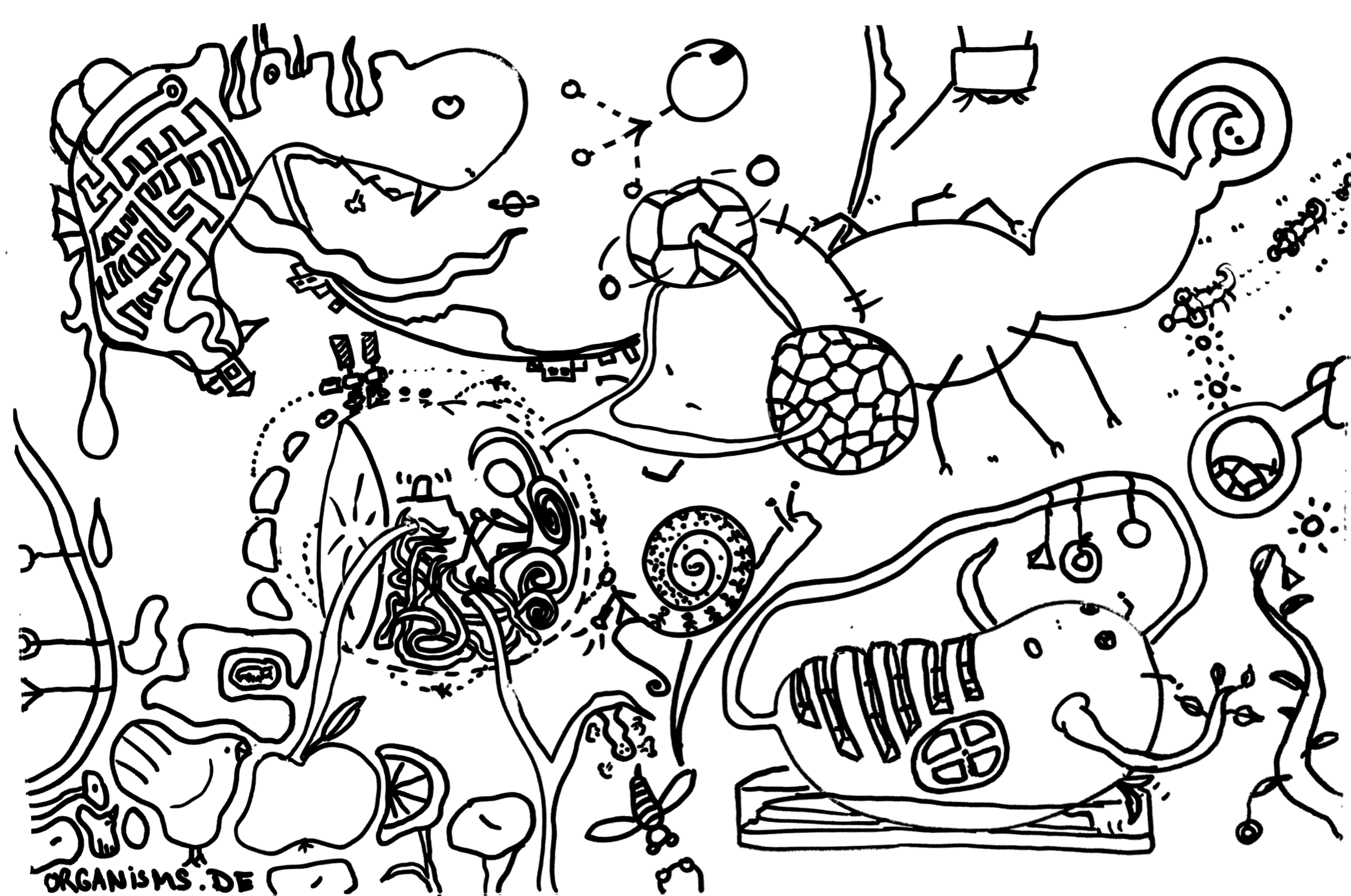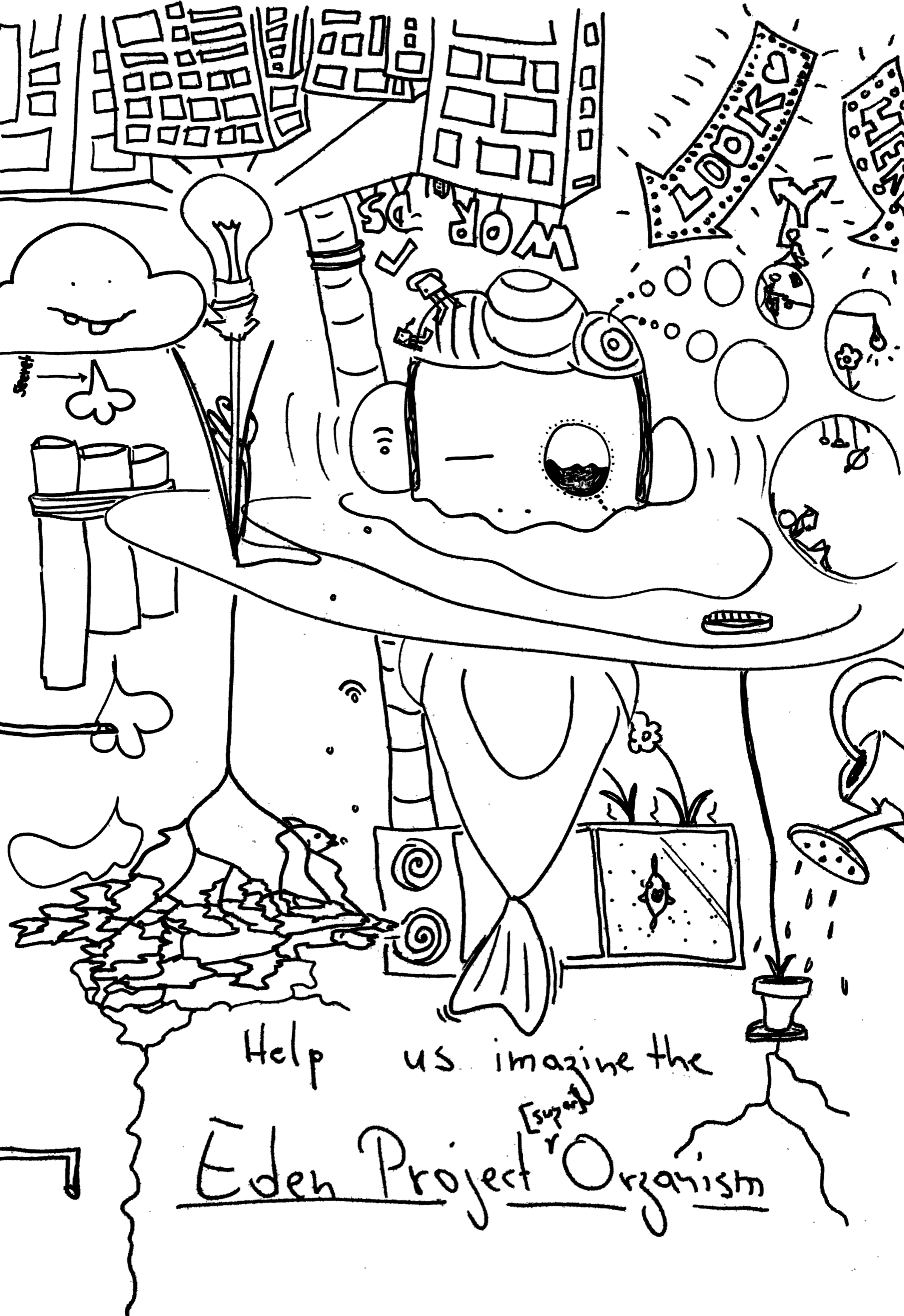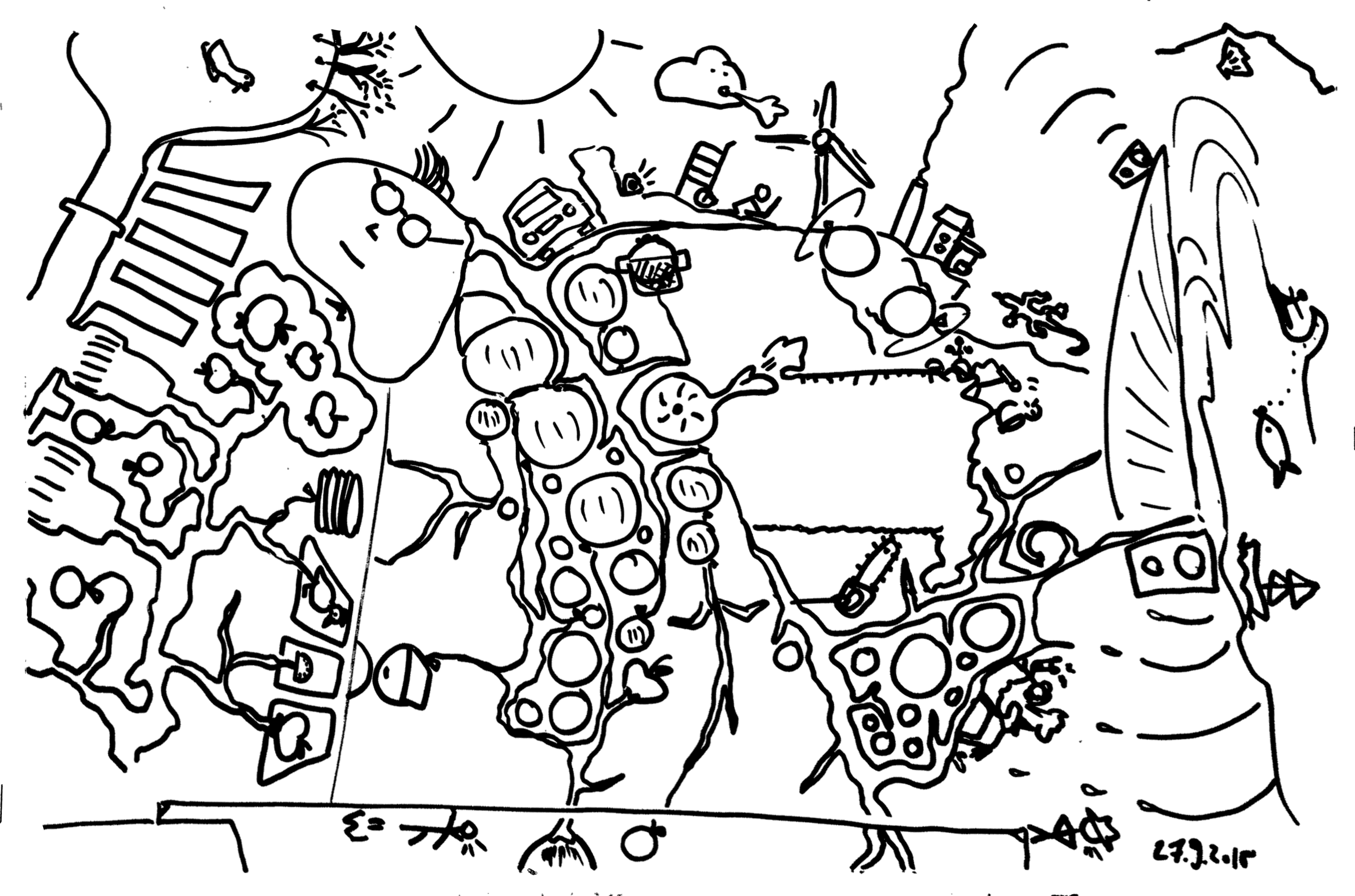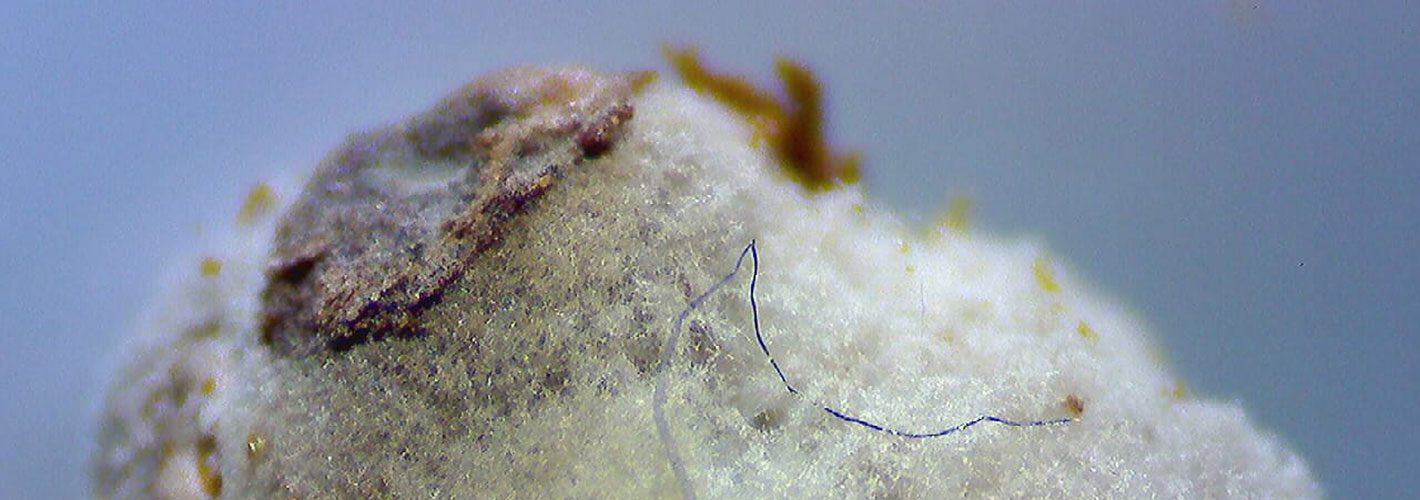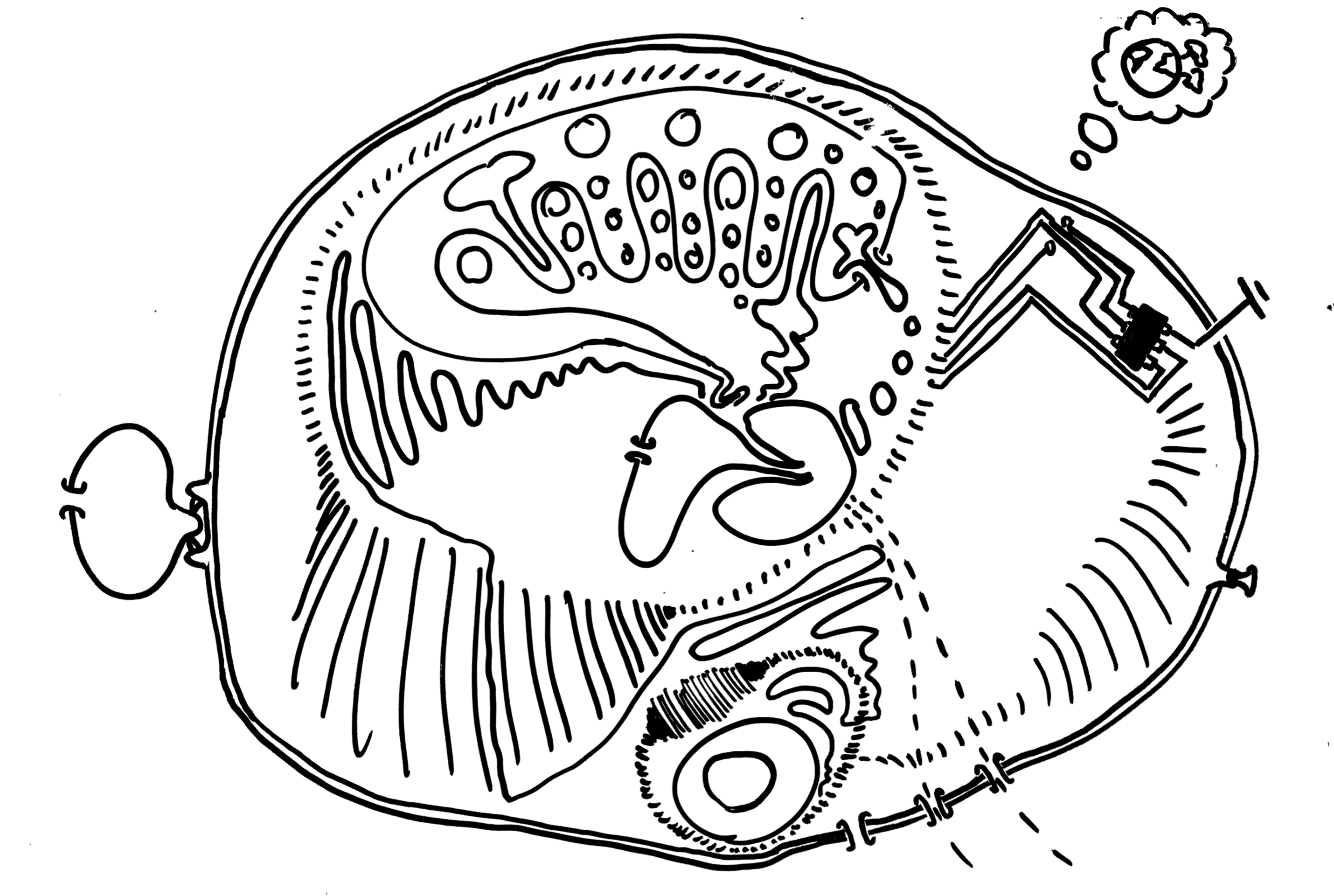
The Eden organism relies on 400 (winter) and 700 (summer) organelles with duties such as facilitating awareness and communication, growth, service, or immune system.
Organelles differ in their phenotype and the area of the organism in which they can be observed. It is not surprising that, as their inner structures vary, their organisational structures differ respectively.
Our research does not yet comprehend the complete corpus of the types of organelles present at Eden – thus the following should serve examples, a glimpse into their multiplicity:
Managers (head/middle) and scientists are mostly found in the foundation, a compartment about 500m uphill from main site. These organelles can be identified through their phenotypical appearance of the office worker class. Managers, scientists and variations of both are moreover to be found within all other organisations of organelles throughout the organism Eden – the foundation being the only department where no other functional element is prevalent.
Organelles involved with plants have a green soft shell whereas organelles providing nutrients to other organelles have turquoise shells. Managers and scientists of the foundation may choose their own shells. Scientists on site* are shelled green, blue or (super-imposed layer of) white. Up to now we identified seven (six) structurally and functionally very different types of organelles that are nevertheless all shelled in blue. We can not yet grasp the reason for their joint visual appearance though recent hypothesis suggest that there may be none.
One type of blue organelles are involved with external organelles, they make up a part of the semi-permeable membrane*.
Independently of their colour and shape, organelles that are permanently associated with the Eden Organism can be identified by a badge that shows a 2-dimensional abstraction of their upper bulb and a keyword by which they can be called. The badge is attached to a red flagellum.
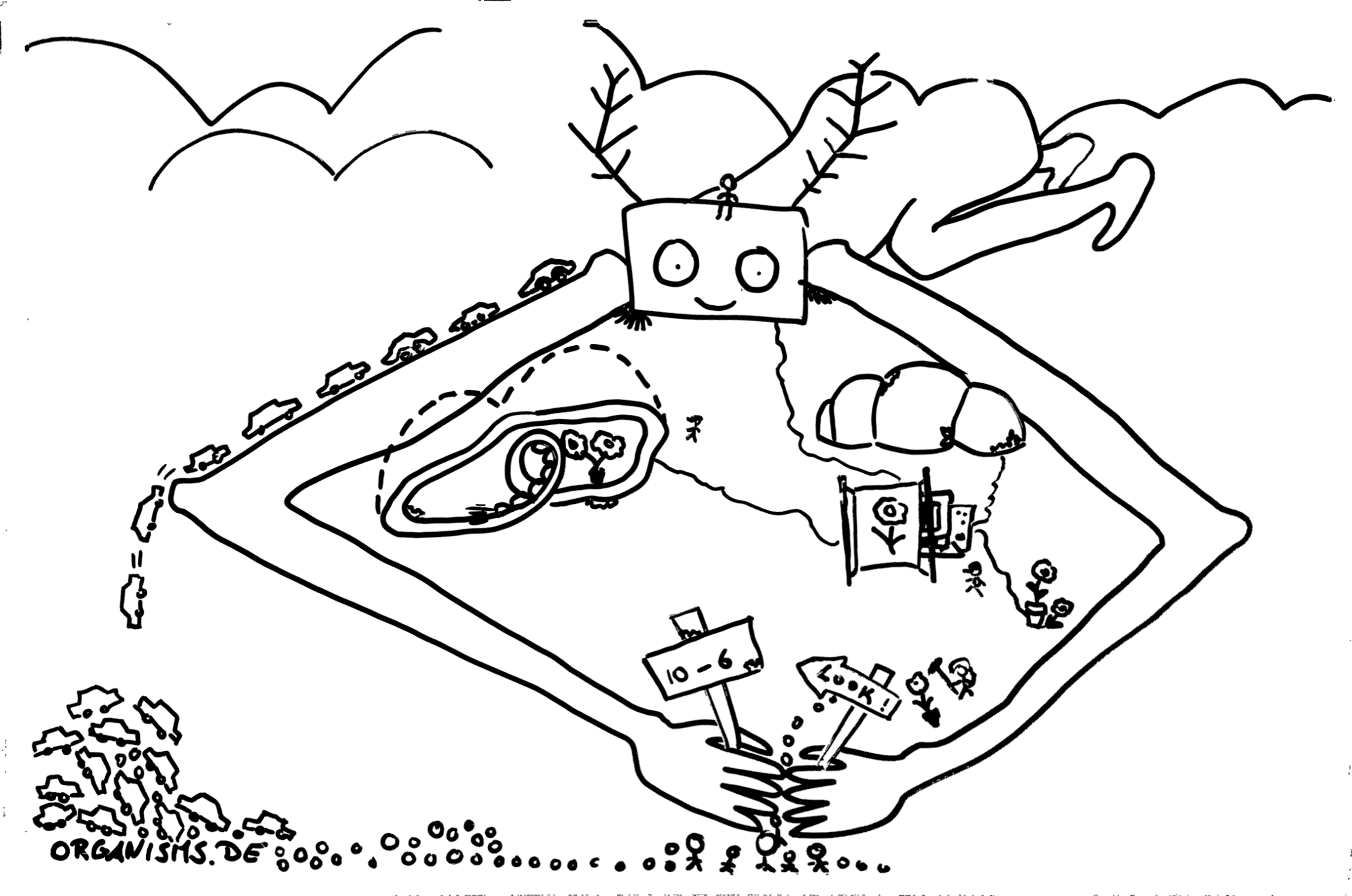
* the pit
Eden is located in and around the pit of a former surface mining site in which china clay (Kaolinite) was won.
The Pit is the casual term for the central area of Eden Project in which the biomes and the outside garden (Outside Biome) are located.
* off-site <> on-site
On-site refers to the area of the three biomes (Mediterranean, Tropics, Temperate/Outside). It is partially accessible to the public, excluded are small strategically located rooms inside as well as on the backside of the biomes where the horticulturists’ and narrators’ offices and the staff canteen are located as well as a specialised part of the semi-permeable membrane that serves as a central transfer point (stopover waste dump).
Off-site on the other hand is often used to describe premises owned by Eden Project that are at least one of the following: A) not located in the pit B) less frequently penetrable by external organelles C) a transformation zone for external organelles (usually to separate from their carriers, some times to fit other carriers).
To give examples of these highly diverse regions: The foundation building, the fruit parking lots, a wetland area, orchard, drying caves…
We are living off-site in Vounder Farm, in the barn of the previous owner of the mine.
Both terms are mainly used on-site and seem to have no meaning or different connotation on-site.
* accessible <> inaccessible
This pair of words describes what is accessible for the visitors and what is off their limits, simultaneously setting the capacity of the environment and the organelles. This also includes passageways such as emergency exits from accessible >inside to >outside. Inaccessible areas are clearly marked as such. The display of a red EP lanyard generally capacitates the organelle that carries it for access.
* food <> wild
EP’s planting areas are almost equally divided into cultivated and wild lands. We and other external organelles are informed that EP’s directive is not only to show endangered or pretty plants but also to explain how plants are used by and useful to humans. 50% of us only truly understand 50% of this dichotomy (edible).
* inside <> outside
Not to be confused with on-site off-site. All planting areas within the biomes are inside, whereas the ones not in the biomes are outside. To be inside a building is not equal to inside. Obviously we don’t yet fully grasp this concept of inside <> outside. We’re sure it has to do with the semi-permeable membrane that runs through all of the parts and dimensions of Eden though is not necessarily connected with itself or if so, then maybe in a half-closed loop.
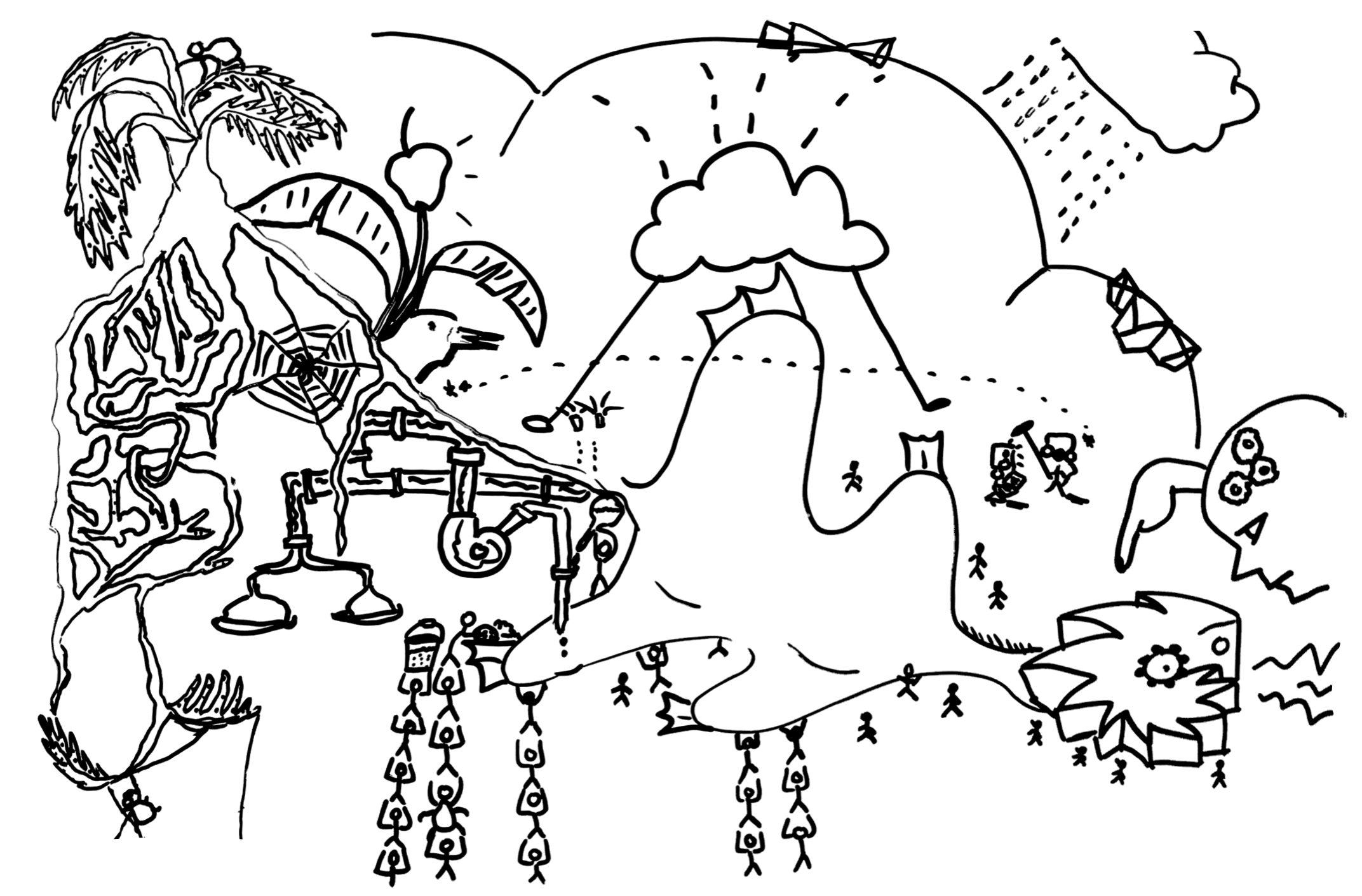
There is a huge amount of knowledge present at EP.
There is Michael, who is responsible for monitoring and running the biomes: he builds, installs and services sensors around the site and writes (explicit) rule-sets when to open which vent and when to turn on and off the heating systems for the biomes. Due to the nature of the biomes (e.g. them being round, and having an oddly shaped surface area) and their vegetation (a mix of basically everything that grows temperature zones that stretch over thousands of kilometers of our earth, even several of such zones) keeping the conditions inside the biomes in an OK state seems to be a non-trivial problem that requires constant tweaking and Mike himself, wandering through the biomes as a mutitude of sensors. Over the last 18 years of EP, the sensor and actor system as well as the control software got optimised and made to allow for fine-grained control.
There is Rachel, who is responsible to oversee potential of pathological diseases: She makes sure that all plants and seeds that are planned to be grown on-site go through a 6-months-long quarantine after which they are inspected for fungi infections. Also, she is responsible for damage control caused by diseases that slipped through this process and to make sure that plants from inside the biomes that are not native to Cornwall are not slipping out.
There is Adam, who works as a narrator mostly in the core building, being the point of contact for visitors who want to know more about the place in general. He has a soft spot for everything around bananas, their cultivation, their influence on our health (via pesticides), their cultural implications and so on.
There is Kevin who is a European expert in scything and knows the outskirts of Eden like the back of his hand. He was the one who cut down the apple tree. It had fallen and gotten sick, sadly it had to go. There is Kevin who oversees the huge pumping systems that keep Eden Project both dry and moist and coordinates a team that takes care of the different water cycles.
All this knowledge appears to be very local. Leaking out the thin ends of Edens tentacles, there seems to be only few reflux from this point to the inner parts of the organism. We did not find any kind of guide-book on how to interact with visitors, or how to run the technical side of the biomes, nor a guided tour about the complex technical side of Eden or its entanglement with nature. People seem to care for their jobs a lot but not always recognise the role of others within the organism that is EP. Communication systems(intranet, internal magazine) are set up and made accessible in all directions under supervision. The intensity of their utilisation is highly individual.

After the initial impression of a garden, EP reveals itself as a theatre where pieces such as plant life, gardening, or natural science are performed by a group of hippies for a (quite conservative) audience. This notion seems to be widely accepted amongst staff; even the internal magazine is called “backstage”.
As of now, we found predominantly pieces of the genres droll story, kids theatre and education, intended for both kids and adults with little to no knowledge in nature, plants, culture or biology.That said, it is assumed that people are capable to read printed english texts. Pieces tend to be carried out as One-act plays from which interest shall spark.
